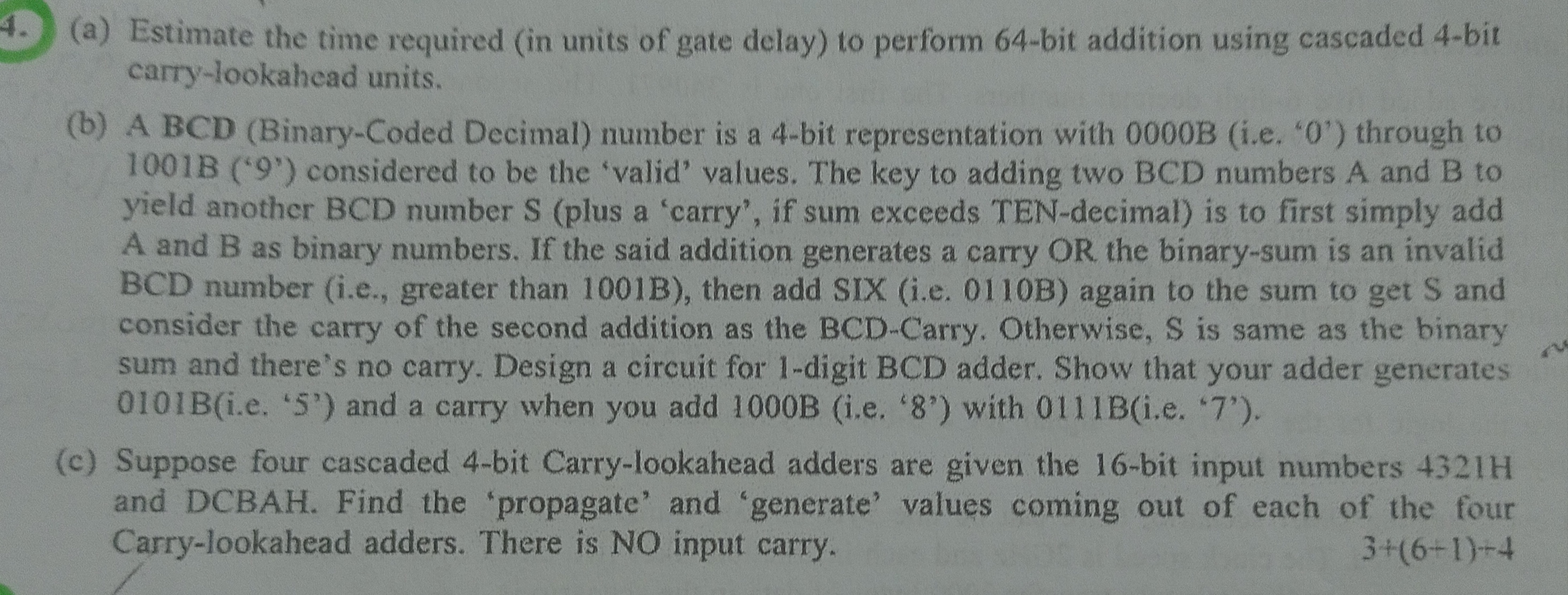Answered step by step
Verified Expert Solution
Question
1 Approved Answer
(a) Estimate the time required (in units of gate delay) to perform 64-bit addition using cascaded 4-bit carry-lookahead units. (b) A BCD (Binary-Coded Decimal)

(a) Estimate the time required (in units of gate delay) to perform 64-bit addition using cascaded 4-bit carry-lookahead units. (b) A BCD (Binary-Coded Decimal) number is a 4-bit representation with 0000B (i.e. '0') through to 1001B (9) considered to be the 'valid' values. The key to adding two BCD numbers A and B to yield another BCD number S (plus a 'carry', if sum exceeds TEN-decimal) is to first simply add A and B as binary numbers. If the said addition generates a carry OR the binary-sum is an invalid BCD number (i.e., greater than 1001B), then add SIX (i.e. 0110B) again to the sum to get S and consider the carry of the second addition as the BCD-Carry. Otherwise, S is same as the binary sum and there's no carry. Design a circuit for 1-digit BCD adder. Show that your adder generates 0101B(i.e. '5') and a carry when you add 1000B (i.e. '8') with 0111B(i.e. *7'). (c) Suppose four cascaded 4-bit Carry-lookahead adders are given the 16-bit input numbers 4321H and DCBAH. Find the propagate' and 'generate' values coming out of each of the four Carry-lookahead adders. There is NO input carry. 3+(6+1)+4 ru
Step by Step Solution
★★★★★
3.51 Rating (181 Votes )
There are 3 Steps involved in it
Step: 1
Lets address each part of your question a To estimate the time required for 64bit addition using cas...
Get Instant Access to Expert-Tailored Solutions
See step-by-step solutions with expert insights and AI powered tools for academic success
Step: 2

Step: 3

Ace Your Homework with AI
Get the answers you need in no time with our AI-driven, step-by-step assistance
Get Started


